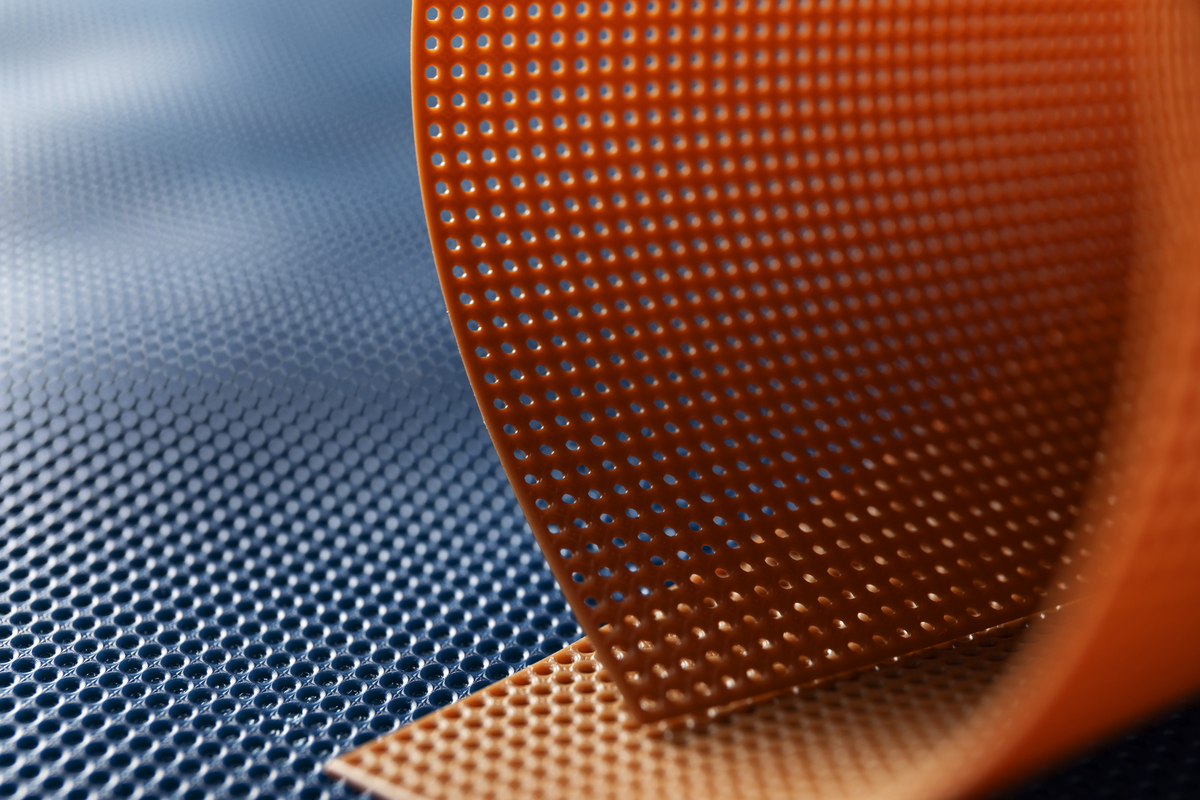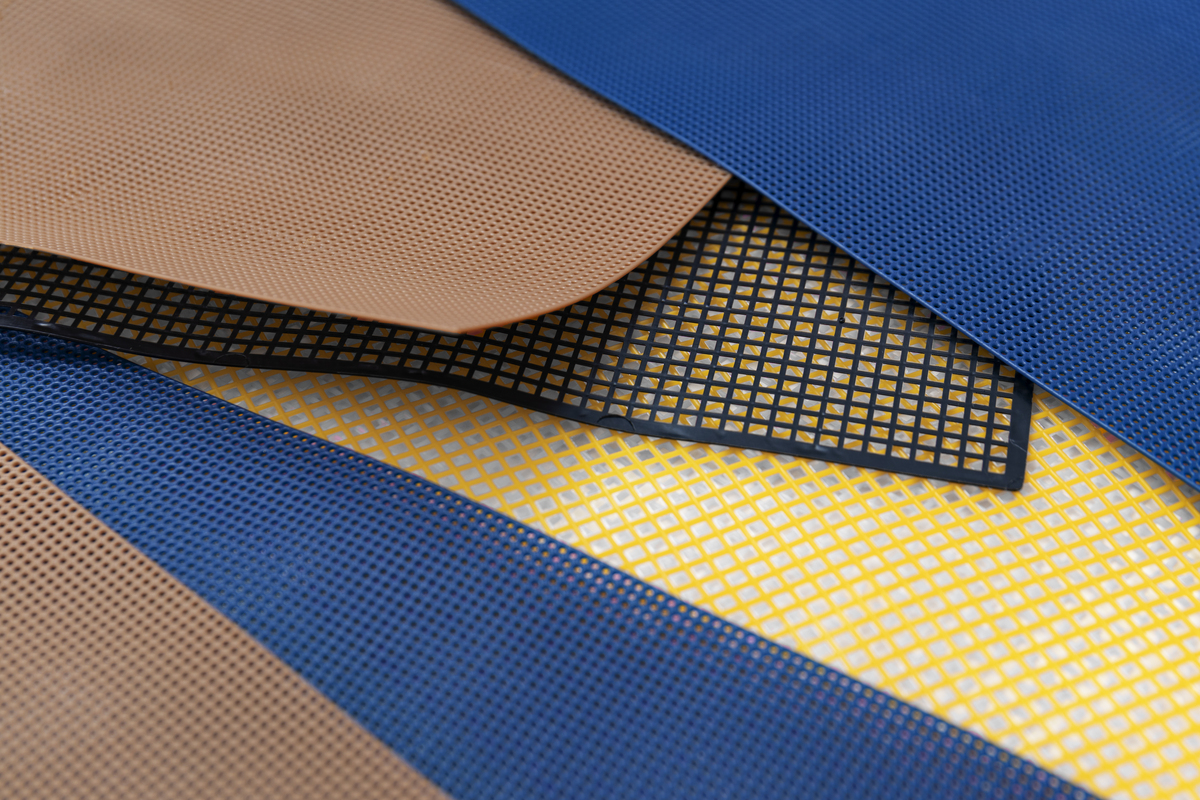Updated by Nazanin Ghodsian, 08/12/2024
Smart materials in buildings are causing a revolutionary change in the quickly developing sector of building design and construction. These novel materials are poised to completely transform the way we create, utilize, and interact with our surroundings thanks to their exceptional dynamic qualities and adaptable qualities. Architects, engineers, and construction experts need to comprehend smart materials in buildings as we enter this new era.
Smart materials have a big influence. According to market research, the global market for smart materials in buildings is expected to develop at a compound annual growth rate (CAGR) of 12.1% from 2020 to 2027, reaching a value of $98.8 billion. The rising demand for cutting-edge smart materials in building that provide better performance, increased functionality, and sustainability is what’s causing this boom.
A broad variety of materials are used as smart materials in buildings, including biologically inspired polymers, shape memory alloys, piezoelectric materials, and self-healing composites. The exceptional sense, react, and adaptability of these materials to environmental changes helps maximize energy efficiency, improve structural integrity, and increase occupant comfort.
The many uses of smart materials in building design and construction will be examined in this handbook. Their responsibilities in structural engineering, energy efficiency, environmentally friendly building methods, user comfort, and disaster resilience will all be covered. Through an analysis of current trends and advancements and a discussion of important issues, this guide seeks to equip professionals with the knowledge and understanding necessary to use smart materials to design buildings that are more intelligent, resilient, and sustainable. It’s evident from our exploration of this fascinating topic that smart materials will fundamentally alter the way that buildings are designed and built in the future.
Table of Contents
Understanding Smart Materials in Buildings
Smart materials in buildings represent a paradigm shift in the construction industry, offering innovative solutions to age-old challenges. Unlike traditional materials, smart materials possess dynamic properties that enable them to respond to external stimuli, adapt to changing conditions, and even exhibit self-healing capabilities. Understanding the fundamental characteristics and potential applications of smart materials is crucial for architects, engineers, and builders seeking to harness their transformative power in building design and construction.
At its core, a smart material is defined by its ability to sense, respond, and adapt to changes in its environment. This responsiveness is achieved through inherent properties or embedded technologies that enable the material to exhibit specific behaviors under various conditions. Smart materials in buildings encompass a diverse range of substances, including shape memory alloys, piezoelectric materials, electrochromic polymers, and self-healing composites, among others.
Smart materials in buildings possess several key characteristics that differentiate them from traditional construction materials:
- Sensitivity: Smart materials can detect changes in their surroundings, such as temperature, pressure, or moisture levels, and respond accordingly.
- Adaptability: These materials can alter their properties in response to external stimuli, allowing them to adjust their shape, stiffness, conductivity, or other attributes as needed.
- Self-Healing: Some smart materials have the ability to repair damage autonomously, extending their lifespan and reducing the need for maintenance.
- Versatility: Smart materials in buildings can be engineered to exhibit a wide range of behaviors, making them suitable for diverse applications in building construction and infrastructure.

Applications in Building Design and Construction
Smart materials in buildings represent a groundbreaking frontier in building design and construction, offering architects, engineers, and builders innovative solutions to enhance structural integrity, energy efficiency, and occupant comfort. By integrating smart materials into various aspects of building design and construction, practitioners can create structures that are not only more resilient and sustainable but also more responsive to the needs of occupants and the environment.
1. Structural Engineering
Smart materials in buildings have revolutionized the field of structural engineering, enabling the development of adaptive and responsive structural systems. Shape memory alloys (SMAs), for example, can change shape in response to temperature variations, allowing for the creation of self-healing and self-stabilizing structures. Piezoelectric materials can convert mechanical stress into electrical energy and vice versa, offering opportunities for energy harvesting and structural health monitoring. These materials can be used to create smart bridges, buildings, and infrastructure that can withstand dynamic loads, mitigate vibrations, and adapt to changing environmental conditions.
2. Energy Efficiency in Buildings
Smart materials in buildings play a critical role in improving the energy performance of buildings by enhancing insulation, optimizing daylighting, and controlling solar gain. Thermochromic and electrochromic coatings can dynamically adjust their transparency in response to temperature or voltage changes, reducing heat transfer through windows and facades. Phase change materials (PCMs) can absorb and release thermal energy to regulate indoor temperatures, reducing the need for mechanical heating and cooling systems. These materials can be incorporated into building envelopes, glazing systems, and shading devices to minimize energy consumption and enhance occupant comfort.
3. Sustainable Construction
Smart materials in buildings contribute to sustainable construction practices by extending the lifespan of building components, reducing material waste, and minimizing environmental impact. Self-healing concrete formulations contain embedded microorganisms or encapsulated healing agents that can repair cracks and damage over time, improving durability and reducing maintenance costs. Recycled smart materials, such as recycled rubber, plastic, or glass, can be used in construction applications to divert waste from landfills and conserve natural resources. These materials support the circular economy by promoting resource efficiency and reducing carbon emissions associated with traditional construction materials.
4. User Comfort and Well-being
Smart materials in buildings enhance occupant comfort and well-being by creating healthier, more responsive indoor environments. Electrochromic and photochromic glazing systems can modulate daylighting and glare, reducing visual discomfort and enhancing productivity. Smart textiles embedded with sensors and actuators can monitor environmental conditions, adjust lighting and ventilation systems, and provide personalized comfort control for occupants. These materials promote a human-centered approach to building design and construction, prioritizing occupant health, satisfaction, and productivity.
5. Disaster Resilience
Smart materials in buildings enhance the resilience of buildings and infrastructure to natural disasters and extreme events. Shape memory polymers can be used to create seismic-resistant structures that dissipate energy and mitigate damage during earthquakes. Self-healing materials can repair cracks and fractures caused by seismic activity, floods, or hurricanes, restoring structural integrity and preventing further deterioration. These materials support the development of resilient communities and infrastructure systems that can withstand the challenges of a changing climate and evolving risk landscape.
The applications of smart materials in building design and construction are diverse and far-reaching, encompassing structural engineering, energy efficiency, sustainability, occupant comfort, and disaster resilience. By leveraging the unique properties and capabilities of smart materials, practitioners can create buildings that are not only smarter and more efficient but also more resilient, sustainable, and responsive to the needs of society and the environment. As research and innovation in this field continue to advance, the integration of smart materials into the built environment holds immense potential to transform the way we design, construct, and inhabit buildings in the 21st century.

Challenges and Considerations
While smart materials offer promising opportunities for enhancing building performance and functionality, their widespread adoption in construction projects is not without challenges. Addressing these challenges and considerations is essential for effectively integrating smart materials into building design and construction practices.
1. Cost Considerations
- High Initial Investment: Smart materials often come with a higher initial cost compared to traditional construction materials, which can present financial barriers for some projects.
- Long-term Cost-benefit Analysis: While smart materials in buildings may offer long-term savings through improved energy efficiency, durability, and reduced maintenance costs, conducting thorough cost-benefit analyses is necessary to justify their implementation.
Suggested article to read: Cost Overruns in Construction Projects; Guide to 2024
2. Durability and Reliability
- Long-term Performance: Ensuring the durability and reliability of smart materials over the lifespan of a building is crucial. Factors such as exposure to environmental conditions, mechanical stress, and chemical degradation can affect their performance.
- Maintenance Requirements: Smart materials in buildings may require specialized maintenance procedures and periodic inspections to ensure optimal functionality, adding to the overall lifecycle costs of a building.
3. Compatibility and Integration
- Compatibility with Existing Systems: Integrating smart materials into existing building systems and infrastructure may pose challenges, particularly in retrofitting projects where compatibility issues with legacy systems need to be addressed.
- Interoperability: Ensuring interoperability between different smart material components and building management systems is essential for seamless operation and control.
4. Standardization and Regulation
- Lack of Standards: The absence of standardized testing methods, performance criteria, and regulatory frameworks for smart materials in buildings can hinder their widespread adoption. Establishing industry standards and codes is necessary to ensure quality control and safety.
- Building Code Compliance: Smart materials may require regulatory approvals and compliance with building codes and standards, which can vary across regions and jurisdictions. Navigating regulatory requirements and obtaining permits may add complexity to the design and construction process.
5. Education and Training
- Knowledge and Skills Gap: Building professionals may lack the necessary knowledge and skills to effectively design, specify, and install smart materials. Providing education and training programs on smart material technologies and applications is essential for building capacity within the industry.
- Collaboration and Interdisciplinary Approaches: Fostering collaboration between architects, engineers, contractors, material scientists, and manufacturers is critical for leveraging the full potential of smart materials in buildings and integrating them into holistic building design solutions.
6. Environmental Impact
- Life Cycle Assessment: Conducting life cycle assessments (LCAs) to evaluate the environmental impact of smart materials in buildings is essential for understanding their sustainability performance. Assessing factors such as embodied energy, resource depletion, and end-of-life disposal options can help inform sustainable material selection decisions.
- Recyclability and End-of-life Management: Considering the recyclability and end-of-life management of smart materials is important for minimizing waste and promoting circular economy principles in building construction.
7. Public Perception and Acceptance
- Trust and Confidence: Building occupant trust and confidence in the safety, reliability, and performance of smart materials in buildings is essential for wider acceptance and adoption. Transparent communication and education about the benefits and limitations of smart materials can help address concerns and build support.
In conclusion, addressing the challenges and considerations associated with implementing smart materials in building design and construction requires a multifaceted approach involving technical, economic, regulatory, and social considerations. By proactively addressing these challenges and leveraging collaborative efforts across the industry, practitioners can unlock the full potential of smart materials in buildings to create smarter, more sustainable, and resilient buildings for the future.

Future Trends and Developments
As technology continues to advance and research in material science expands, the future of smart materials in building design and construction holds tremendous potential for innovation and transformative change. Several emerging trends and developments are shaping the evolution of smart materials, paving the way for more sustainable, resilient, and intelligent buildings.
1. Advanced Functionalities
- Multi-functional Materials: Future smart materials in buildings are expected to possess multiple functionalities, such as self-healing, self-cleaning, energy harvesting, and sensing capabilities, integrated into a single material system.
- Responsive Architectures: Materials with adaptive properties, such as shape-changing capabilities, responsive to environmental stimuli, will enable the development of dynamic building components and systems that adjust in real-time to changing conditions.
2. Nanotechnology and Nanomaterials
- Nano-enabled Materials: Nanotechnology in construction holds promise for enhancing the performance and functionality of smart materials in buildings by manipulating materials at the nanoscale. Nano-enabled coatings, composites, and sensors offer improved strength, durability, and responsiveness.
- Self-assembling Materials: Self-assembling nanomaterials have the potential to autonomously organize and repair themselves at the molecular level, leading to self-healing materials with unprecedented capabilities.
3. Biologically-inspired Materials
- Bio-mimetic Design: Drawing inspiration from nature, bio-mimetic materials mimic biological structures and processes to achieve enhanced functionality and performance. Examples include materials inspired by spider silk for high-strength fibers and lotus leaves for self-cleaning surfaces.
- Living Materials: Incorporating living organisms, such as bacteria or fungi, into building materials for self-repair and bio-mediated processes, offers new opportunities for sustainable construction practices.
4. Smart Textiles and Wearables
- Interactive Fabrics: Smart textiles embedded with sensors, actuators, and electronic components enable the development of wearable technologies and responsive building envelopes that adapt to occupant preferences and environmental conditions.
- Energy Harvesting Fabrics: Textiles capable of harvesting energy from ambient sources, such as solar radiation, motion, or temperature differentials, provide renewable energy solutions for powering building systems and devices.
5. Data-driven Materials Design
- Computational Modeling: Advances in computational modeling and simulation techniques enable predictive design and optimization of smart materials in buildings with tailored properties and performance characteristics.
- Machine Learning and AI: Machine learning algorithms analyze vast datasets to identify patterns and optimize material formulations, accelerating the discovery and development of novel smart materials.
6. Circular Economy in Construction and Sustainability
- Recyclable and Biodegradable Materials: Smart materials in buildings designed for recyclability and biodegradability support circular economy principles, reducing waste and environmental impact.
- Carbon-neutral Materials: Developing carbon-neutral or carbon-negative materials using renewable resources and low-carbon manufacturing processes contributes to mitigating climate change and promoting sustainable development.
7. Internet of Things (IoT) Integration
- Sensor Integration: Smart materials in buildings embedded with sensors and actuators seamlessly integrate with IoT platforms, enabling real-time monitoring, control, and optimization of building performance.
- Data-driven Decision-making: Data collected from smart materials and building systems inform data-driven decision-making processes, enhancing operational efficiency, occupant comfort, and sustainability.
The future of smart materials in building design and construction is characterized by continuous innovation, integration of advanced functionalities, and a focus on sustainability and resilience. By embracing emerging trends and developments, practitioners can unlock new opportunities for creating intelligent, adaptive, and environmentally responsible buildings that meet the evolving needs of society and the built environment.

Conclusion
The exploration of smart materials in building design and construction unveils a landscape ripe with innovation and potential. Smart materials, with their dynamic properties and adaptive capabilities, promise to revolutionize the way we conceive, construct, and inhabit buildings. From shape memory alloys to self-healing concrete, these materials offer solutions to longstanding challenges while paving the way for sustainable, resilient, and intelligent structures.
Understanding the fundamental characteristics and applications of smart materials is paramount for architects, engineers, and builders seeking to harness their transformative power. These materials possess a myriad of functionalities, from sensing and responding to changes in the environment to enhancing energy efficiency and occupant comfort. By integrating smart materials into various aspects of building design and construction, practitioners can create structures that not only withstand the test of time but also actively contribute to a more sustainable and livable built environment.
However, the adoption of smart materials in buildings is not without its challenges. Cost considerations, durability concerns, regulatory hurdles, and the need for education and training pose significant barriers to widespread implementation. Addressing these challenges requires a collaborative effort across disciplines, as well as a commitment to innovation, research, and standards development.
Looking ahead, the future of smart materials in building design and construction holds immense promise. Emerging trends in nanotechnology, biologically-inspired materials, data-driven design, and circular economy principles are reshaping the landscape of material science and engineering. By embracing these trends and developments, practitioners can unlock new opportunities for creating buildings that are not only smarter and more efficient but also more sustainable, resilient, and responsive to the needs of society and the environment. As we embark on this journey of exploration and innovation, the integration of smart materials into the built environment holds the potential to transform the way we conceive, construct, and experience buildings for generations to come.
FAQs
What are Smart Materials in Buildings?
- Answer: Materials that are able to sense and react to changes in their surroundings are known as smart materials. These materials improve sustainability, efficiency, and performance in buildings by responding to changes in humidity, pressure, and temperature. Shape memory alloys, piezoelectric materials, and self-healing composites are a few examples.
What are some Challenges Associated with Using Smart Materials in Construction?
- Answer: High starting prices, integration complexity, and the requirement for continual research and development to maximize material performance are some of the challenges. Concerns regarding long-term durability and the requirement for specialist installation methods can also exist. For smart materials to be implemented successfully, these difficulties must be balanced with their advantages.
Can Smart Materials Improve Energy Efficiency in Buildings?
- Answer: Indeed, using intelligent materials can greatly improve energy efficiency. Phase-change materials, for example, have the ability to absorb and release heat to control indoor temperature, negating the need for HVAC equipment. Furthermore, smart glass can lower energy usage for climate management and modify transparency to regulate solar gain.
Suggested article for reading:
Top 7 Reusable Materials in Construction; 2024 Review
Top 7 Smart Materials in Architecture (2024)
Top 10 Green Building Materials
Smart Warehouse in Construction; Guide to 2024
Smart Windows For Smart Buildings; Comprehensive Guide 2024
Resources:
EA | MarketsandMarkets | Science Direct | Mide Technology | XeelTech | IOPscience | Smart Materials 3D
For all the pictures: Freepik



